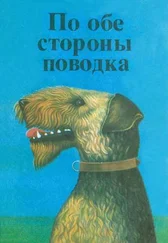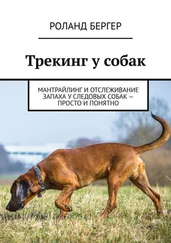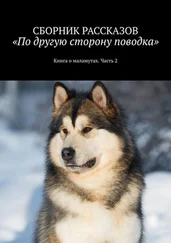Beck, Alan M. 1973. The Ecology of Stray Dogs: A Study of Free-Ranging Urban Animals. Baltimore, Maryland.: York Press.
Beck, Alan and Aaron Katcher. 1983. Between Pets and People: The Importance of Animal Companionship. New York: G. P. Putnam's Sons.
Beckoff, Marc, ed. 1978. Coyote Biology, Behavior and Management. New Yak Academic Press.
Bolhuis, Johan H. and Jerry A. Hogan, eds. 1999. The Development of Animal Behavior. Oxford, U.K.: Blackwell Publishers.
Brazleton, T Berry. 1983. Infants and Mothers: Differences in Development. New York: Delacorte Press.
Campbell, William E. 1995. Owner's Guide to Better Behavior in Dogs., 2d ed. Loveland, Col.: Alpine Blue Ribbon Books.
Delson, Eric, Ian Tatersall, John A. Van Couvering, and Alison S. Brooks, eds. 2000. Encyclopedia of Human Evolution and Prehistory. New York: Garland Publishing.
de Waal, Frans. 1989. Peacemaking Among Primates. Cambridge, Mass.: Harvard University Press.
de Waal, Frans. 1996. Good Natured: The Origins of Right and Wrong in Humans and Other Animals. Cambridge, Mass.: Harvard University Press.
de Waal, Frans. 1998. Chimpanzee Politics, Power and Sex Among Apes. Baltimore, Md: Johns Hopkins University Press.
Dodman, Nicholas H. 1996. The Dog Who Loved Too Much. New York: Bantam Books. Goodall, Jane van Lawick. 1971. In the Shadow of Man. Boston: Houghton Mifflin Company.
Gould, Stephen Jay. 1979. «Mickey Mouse Meets Konrad Lorenz.» Natural History 88. no. 5: 30–36.
Gould, Stephen Jay. 1982. «A Biographical Homage to Mickey Mouse.» Pp. 95–107 in The Panda's Thumb. New York: W. W. Norton.
Harlow, Harry F. and Margaret K. Harlow. 1962. «Social Deprivation in Monkeys.» Scientific American 207(5): 136–46.
Ingold. Tim, ed. 1994. Companion Encyclopedia of Anthropology: Humanitys Culture and Social Lift. New York: Routledge.
Jolly, Allison. 1985. The Evolution of Primate Behavior. 2d ed. New Yak: Macmillan Publishing, Co.
Knapp, Caroline. 1995. Pack of Two: The Intricate Bond Between People and Dogs. New York: Dial Press.
Llewellyn, Karl, and E. Adamson Hoebel. 1941. The Cheyenne Way. Norman, Okla.: University of Oklahoma Press.
Mason, William A. and Sally P. Mendoza, eds. 1993. Primate Social Conflict. Albany, NY: State University of New Yak Press.
McConnell, Patricia B. 1998. The Cautious Canine: How to Help Dogs Conquer Their Fears. Black Earth, Wis.: Dog’s Best Friend, Ltd.
McGrew, William C., Linda E. Marchant, and Toshisada Nishida, eds. 1996. Great Ape Societies. New York: Cambridge University Press.
Monks of New Skete. 1978. How to Be Your Dog’s Best Friend. Boston: Little, Brown and Company.
Patterson, Francine. 1985. Koko’s Kitten. New York: Scholastic.
Peoples, James and Garrick Bailey. 1997. Humanity: An Introduction to Cultural Anthropology. 4th ed. Belmont, Calif.: Wadsworth Publishing Co.
Ryan, Terry. 1998. The Toolbox for Remodeling Your Problem Dog. New York: Howell Book House.
Scott, John Paul and John L. Fuller. 1965. Genetics and the Social Behavior of the Dog. Chicago: University of Chicago Press.
Serpell, James, ed. 1995. The Domestic Dog: Its Evolution, Behaviour and Interactions with People. New York: Cambridge University Press.
Strum, Shirley C. 1987. Almost Human: A Journey into the World of Baboons. New York: Random House.
Thomas, Elizabeth Marshall. 2000. The Social Lives of Dogs: The Grace of Canine Company. New York: Pocket Books.
Walker, Peter. 1995. Baby Massage: A Practical Guide to Massage and Movement for Babies and Infants. New York: St. Martin's Griffin.
Wendt, Lloyd M. 1996. Dogs: A Historical Journey. New York: Howell Book House.
Wills, Jo and Ian Robinson. 2000. Bond for Lift: Emotions Shared by People and Their Pets. Minoequa, Wis.: Willow Creek Press.
Zimen, Erik. 1982. «A Wolf Pack Sociogram». Pp. 282–322 in Wolves of the World. edited by Fred H. Harrington and Paul C. Paquet. Park Ridge, NJ: Noyes Publications.
Глава 8. Терпеливые собаки и мудрые люди
Ряд мнений по поводу роли «доминантности» и социального статуса в отношениях и проблемах поведения вашей собаки можно обнаружить в следующих книгах:
Dodman, Nicholas. 1996. The Dog Who Loved Too Much. New York: Bantam Books.
Donaldson, Jean. 1996. The Culture Clash. Berkeley, Calif.: James and Kenneth Publishers.
Dunbar, Ian. 1998. How to Teach a New Dog Old Tricks. Berkeley, Calif.: James and Kenneth Publishers.
Hetts, Suzanne. 1999. Pet Behavior Protocols. Lakewood, Col.: AAHA Press.
London, Karen L. and Patricia B. McConnell. 2001. Feeling Outnumbered? How to Manage and Enjoy Your Multi-Dog Household. Black Earth, Wis.: Dog’s Best Friend, Ltd.
McConnell, Patricia B. 1996. Beginning Family Dog Training. Black Earth, Wis.: Dog’s Best Friend, Ltd.
McConnell, Patricia B. 1996. How to be Leader of the Pack and Have Your Dog Love You for It. Black Earth, Wis.: Dog’s Best Friend, Ltd.
Overall, Karen. 1997. Clinical Behavioral Medicine for Small Animals. St. Louis, MO: Mosby.
Wright, John C. and Judi Wright Lashnits. 1999. The Dog Who Would Be King. Emmaus, Penn.: Rodale Press.
Глава 9. Личности
Каждому, кто ищет собаку, было бы полезно для начала найти опытного тренера собак или зоопсихолога, который помог бы оценить личные качества потенциальной новой собаки. Огромную роль в прогнозировании того, как собака из одних условий окружающей ее среды, будет вести себя в других условиях, играет некоторый опыт. Знание общих черт породы может помочь в том случае, если вы ищите «породистую» собаку, однако многие миллионы замечательных собак не могут похвастать «родословной», кроме того, как было сказано в этой главе, собаки все равно не читают книг.
Несмотря на то что большая часть стандартов пород, принятых Американским клубом собаководства, касается физических черт собак, иногда чтение стандартов клубов определенных пород может дать некоторую информацию об общих индивидуальных чертах индивидов, принадлежащих к той или иной породе (имейте в виду, что Американский клуб собаководства — лишь одна из «канцелярий», которые отслеживают генеалогию собак. И, несомненно, самая крупная. Однако «документы» АКС, как и документы других «канцелярий» подобного рода, являются всего лишь списком производителей, которые не гарантируют никакого качества). К стандартам пород и их описаниям нужно всегда относиться критически, поскольку они создаются людьми, отдающими предпочтение породистым собакам, и нередко пишутся так, как если бы каждый представитель определенной породы мог бы считаться клоном любой другой собаки той же породы. Тем не менее, видя в стандарте или описании породы слова вроде «держится на расстоянии от незнакомцев», будьте бдительны. Такая порода может быть не самым лучшим выбором для того, кто привык к большому числу гостей в своем доме, если только ему не удастся найти нескольких представителей этой породы, никогда не читавших стандартов.
Читать дальше
![Патриция Макконнелл По ту сторону поводка [Как понять собаку и стать понятным ей] обложка книги](/books/29917/patriciya-makkonnell-po-tu-storonu-povodka-kak-pon-cover.webp)











